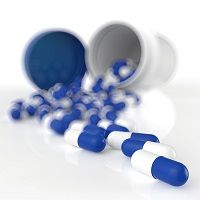Many Parents Keep Unused Prescription Opioids at Home
Survey results suggest nearly one-half of parents whose child had leftover prescription opioids following a surgery or for an illness keep the pain medication in the home.

Recently released results of the latest C.S. Mott Children’s Hospital National Poll on Children’s Health indicate that nearly one-half of parents whose child had leftover prescription opioids following a surgery or for an illness keep the pain medication in the home. However, the likelihood of proper disposal of leftover pills was much higher in parents with children whose providers discussed what to do with any that remained once the child no longer required the opioids or stopped taking them for another reason.
The Mott poll report presents findings from a nationally representative household survey conducted among 1,176 parents with at least one child aged 5 to 17 years.
“We found that the amount of pain medication prescribed for children is frequently greater than the amount used, and too few parents recall clear direction from their provider about what to do with leftover medication,” said Sarah J. Clark, MPH, co-director of the poll and an associate research scientist in the Department of Pediatrics at the University of Michigan’s C.S. Mott Children’s Hospital. “This is a missed opportunity to prevent prescription drug misuse among children. Many parents simply keep extra pain pills in their home. Those leftover pills represent easy access to narcotics for teens and their friends.”
The poll also found that nearly one-third of parents reported at least one pain medication prescription of their child, mostly related to surgery, illness, or injury. Of the prescriptions, 60% were for narcotics, including oxycodone and hydrocodone.
Among the one-half of parents who reported that their child had leftover medication, only 8% returned it to the doctor or pharmacy. Another 47% kept the pills at home, 30% disposed of the medications in the trash or toilet, 6% used the leftover pills for other family members, and 9% were unable to recall what happened with the remaining medication.
Whereas parents whose providers discussed what to do with leftover pain pills were twice as likely to not keep them at home as those with no guidance from their child’s provider, just one-third of parents reported that their child’s provider offered instructions on proper disposal.
“The epidemic of prescription drug abuse affects all sectors of the US population, including children and teens,” said Clark. “For adolescents, a known point of access to narcotic pain medication is leftover pills from a prior prescription. Our poll suggests we need to do a much better job of explaining this risk to parents.”
Clark and colleagues offer the following takeaways for healthcare providers:
- Do not assume that parents understand the risks of easily accessible pain medication in the home. Explain this risk to parents, and offer guidance on appropriate options (eg, return to provider office or pharmacy; safe disposal in trash, not flushing down the toilet).
- It appears that when providers do offer direction to parents, parents make better decisions with leftover medication.
- In this poll, one-half of parents whose children had received a prescription for pain medication had pills left over. This raises a fundamental question about how providers approach the task of prescribing pain medication to children.
- Providers should make careful decisions regarding the amount of narcotic pain medication prescribed to children, and parents should feel comfortable asking questions about the amount of medication prescribed.
- Parents need clearer guidance on all aspects of administering prescription medications for their children. This is particularly true for pain medication, which differs from the very specific manner in which other medications are handled; rather, the administration of pain medication is linked to the child’s symptoms without a strict schedule or endpoint.